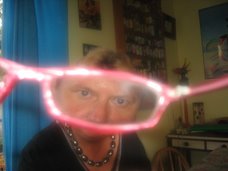Sand slugs come slip-sliding from mountain
But the board rider and teacher (right) isn’t sizing up the surf on Taranaki’s wild west coast; he’s sampling the sand.
To put it in literal terms, he was doing research for his Beaches and Littoral Sand Transport of Taranaki study, backed by the Royal Society of New Zealand and administered by the Government.
Put even simpler, he was watching sand movements along the coast between the Hangatahua (Stony) River and Kaihihi Rd (where the Okato pub is).
Or, in other words, he was surveying a sand slug, which is a large amount of sand that gets moved along the coastline.
In Taranaki, along with the weather, how much snow is on the mountain and the surf conditions, the coming and going of our black iron sand is a common topic of small talk.
That’s why Bruckner took last year off to stake out the Kumara Patch, one of Taranaki’s most-famous surf spots at Okato.
The Californian primary school teacher, who with wife Becky became a New Zealand permanent resident in 1990, was fascinated by the region’s ever-changing beaches.
He was used to white sandy beaches that stayed basically the same. In his new land, he noticed how Surf Highway 45’s beaches transformed dramatically from storm to storm, and sometimes for no apparent reason at all.
Bruckner refers to Ahuahu Rd. “I was amazed to see how much sand filled up that bay.”
He became curious: “Where is all the sand coming from and where is going to?”
The first time he walked the Kumara patch beach, it was all just rocks (see picture below, taken in March 2006). “No sand whatsoever.”
Then in 1998, there was a huge slip on Mt Taranaki and the Stony River filled up with sediment, destroying fishing holes, and pouring sand on to the beach, covering the rocks.
“That’s the first time I saw the accretion of it,” he says.
Accretion is the building up of a beach, which is the complete opposite to erosion.
Experts from the Taranaki Regional Council told Bruckner it took five years for the Stony River to flush itself out and all the fishing holes to come back.
A great fishing year was expected in 2003, with the trout back and thriving. But the mountain was having none of that. Another large slip fell into the river, filling it up all over again and sending another sand slug sliding along the coast towards New Plymouth.
The predominant swell direction, which comes out of the south-west, hits beaches like Opunake straight on. But around the bump, it comes at an angle, pushing the sand along.
 The bays along the coast fill up with sand, then when they can’t take any more, the excess is washed along to the next bay.
The bays along the coast fill up with sand, then when they can’t take any more, the excess is washed along to the next bay.New Plymouth oceanographer Peter McComb describes it like this: “A bay is like a cup. When you keep filling the cup, it will get filled to overflowing. Then the sediment (sand) has to be spread elsewhere.”
Dr McComb, of MetOcean Solutions, is a “big picture” man.
He says if it wasn’t for Mt Taranaki providing the heavy-duty rock armour for the region via eruptions, the bump would have been flattened thousands of years ago.
Even now the mountain continues to protect the coast by sending slips down the rivers to replenish the sand.
He describes the mountain as a “sand factory”, with the Stony River the most efficient chute for delivering sand because of its steepness.
The latest sand slug is making a difference to the beaches, but it’s not all good news. While Oakura Beach’s sand erosion problem has gone – for now – so have a number of good paua collecting spots.
Dr McComb says that while the beaches are growing at this point in time, geological time tells a different story. “Five thousand years ago the beach was right out here,” he says using an opaque window like a white board to draw a line out from Taranaki, flattening the bump into a gentle rise.
“Twenty thousand years ago, the Maui platform would have been dry just about.”
Bruckner’s study only encompassed a twitch of the eye, not even a blink in the time scale. He also focused on just a 2.38km stretch of beach, which he marked out with five stakes.
His studies took him there every week and sometimes more, especially in stormy weather when change was often more obvious.
He regularly took GPS readings to see how far the sand stretched into the sea and measured the changing contours of the sand.
During his year of sand watching, he saw the beach grow and go dramatically.

In September last year, the sand just north of the Stony River stretched 85 metres towards the sea. In October, it measured 100m and December it went right out to 150m, covering more and more rocks. “I have the information for January – it went out even further,” he says.
Even a wee lagoon formed high up on the beach, providing a private swimming hole for his family (pictured, right).
Bruckner has graphed and mapped his results, which show the beach is definitely growing.
He’s now passing the baton, or the stake in this case, to a Waikato University masters student, who will be supervised by coastal oceanography Professor Terry Healy.
He’s hoping it reveal new scientific data about the shifting sands of Taranaki.
















